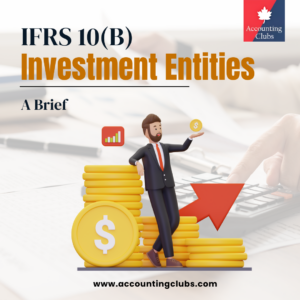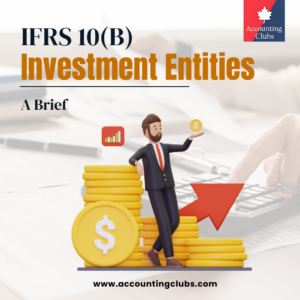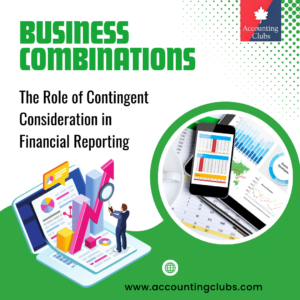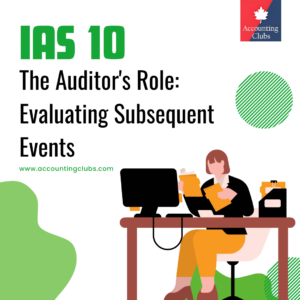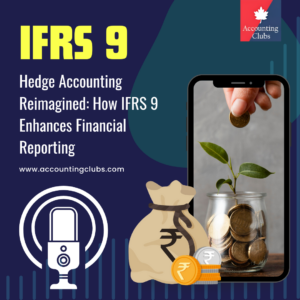Chapter 6: Cost at initial recognition
Cost is not defined in the standard, but it is usually understood to be the fair value of cash or other consideration paid by the purchaser. Cost, in most asset standards under IFRS, includes transaction costs. It is reasonable for those costs to form part of the investment in the associate or joint venture at initial recognition.
Acquisition of an associate or joint venture for cash or other financial assets
The cost of an investment in an associate or a joint venture at initial recognition usually includes an estimate of any contingent consideration at fair value. Contingent consideration is further consideration due to the seller where the amount is uncertain or payment depends on the outcome of future events.
The most common form of contingent consideration arises where the acquirer agrees to pay additional consideration, in cash or in shares, if the acquired company achieves a certain level of performance (see chapter 29 para 62 for guidance regarding contingent consideration arrangements).
An investor has an accounting policy choice on how to account for subsequent changes in the value of the contingent consideration until settled. The investor can follow a cost accumulation approach, adjusting all changes in contingent consideration to the investment in the associate or joint venture, by analogy to variable consideration for the acquisition of an asset.
Alternatively, the investor can apply IFRS 3, by analogy, and account for all changes in contingent consideration in the income statement
Determination of cost of an investment in an associate and treatment of contingent consideration IAS 28 contains no specific guidance on how to account for contingent consideration. Like acquisition costs, the treatment of contingent consideration is not dealt with specifically in IAS 28.
At the date of acquisition, an estimate of the contingent consideration is usually included as part of the cost of the acquisition. There are different treatments for subsequent changes in the contingent consideration.
The following two methods are considered as acceptable for the accounting of subsequent changes in contingent consideration:
- Cost-based approach.
Any revisions to the contingent consideration estimates, after the date of acquisition, are accounted for as changes in estimates in accordance with IAS 8, to be accounted for on a prospective basis.
The change in the liability, as a result of the revised cash flows, would be adjusted to the cost of the asset and, in accordance with IAS 8, recognised as part of the associate’s carrying amount rather than in profit or loss.
- By analogy with IFRS 3. The guidance for contingent consideration under IFRS 3 is based on the fair value approach. Under this approach, all contingent consideration is classified and measured at fair value at the acquisition date. By analogy with IFRS 3, the contingent consideration is classified either as a liability or as equity.
Contingent consideration that is classified as an equity instrument is not remeasured. Contingent consideration that is classified as an asset or liability is accounted for under IFRS 9 (IAS 39).
Any change in the contingent consideration is then accounted for in profit and loss in accordance with IFRS 9 (IAS 39).
Contributions of an asset or a business
An investor might contribute assets or a business to its associate or joint venture on formation. The investor might lose control of a business and retain an interest in an associate or a joint venture. These are economically similar transactions.
The investor might also receive additional consideration (in the form of cash or other assets) from other investors, as well as an equity interest in the associate or the joint venture in exchange for assets contributed. The accounting treatment differs between contribution or disposal of an asset and that of a business. There is a further accounting policy choice available to the investor on the contribution of a business.
An entity that contributes a non-monetary asset, not a business, in exchange for an equity interest in the associate or joint venture recognises any gain or loss from the transaction to the extent of the unrelated party’s interest.
Exchanges with third parties are presumed to have commercial substance. If commercial substance is lacking, any gain or loss is unrealised. The cost of the investment in the associate or joint venture is the cost of the asset contributed plus the recognised portion of the gain or loss plus any transaction costs or contingent consideration.
An entity might contribute a controlled business to a joint venture or associate, or it might decrease its stake in a controlled business to that of an investment in an associate or joint venture. There is a conflict between the requirements of IFRS 10 and IAS 28 on accounting for such a transaction. This acknowledged conflict gives rise to an accounting policy choice.
IFRS 10 requires the retained interest in an associate or joint venture to be remeasured at fair value, with both the disposal gain and the holding gain recognised in the income statement. IAS 28 requires the elimination of gains that arise between an investor and its associate or joint venture to the extent of the investor’s interest.
Therefore, the investor can choose to recognise a partial gain under the IAS 28 approach or a full gain under the IFRS 10 approach. The policy choice should be applied consistently to similar transactions, and it should be accompanied by clear disclosure.
The IASB has published amendments to IFRS 10 and IAS 28, to resolve the conflict and to clarify that full gain or loss is recognised by the investor on contribution of a business, and partial gain or loss on the contribution of assets that do not meet the definition of a business.
The amendments are available to be adopted, but the IASB has deferred the mandatory effective date of the amendment indefinitely, pending finalisation of its research project on the equity method.
Accounting for monetary and nonmonetary assets exchanged on formation of an associate or joint venture or subsequently Any monetary or non-monetary assets exchanged during the formation of the associate or the joint venture, or subsequently, should be considered when determining the consideration received by the entity.
An entity might receive cash (either directly from the other investors in the associate or joint venture, or from the joint venture itself) as well as shares for the asset or business transferred to the associate or joint venture. Where cash is received from the other investors (and not the associate or joint venture itself), the earnings process is complete in relation to the cash element of the consideration.
For example, an entity transfers an asset with a fair value of C1,000 and a carrying amount of C900 to an associate or a joint venture in which it has a 40% interest. The entity receives, in exchange, both cash consideration of C250 from the other investors and shares in the associate or joint venture with a fair value of C750.
The gain would be treated as realised for the portion of the consideration received in cash from the other investors.
The gain on the portion of the consideration received in shares is only realised to the extent of the other party’s share in the associate or joint venture.
The realised gain in this example is therefore C70 ((C100 × 25%) + (C100 × 75% × 60%)). The unrealised portion of the gain only becomes fully realised once the asset is sold by the associate or joint venture (for example, to a third party).
Another example is where a parent has a property that it contributes to a 55/45 joint venture for an issue of shares. The carrying value of the property is C1,000 and its fair value is C1,200. It would recognise a gain in the consolidated profit or loss of C90 (C200 × 45%), because the unrelated entity’s interest is 45%.
Methods by which an associate can arise from the disposal of a subsidiary There are various methods by which a subsidiary investment can be changed to an associate investment. Some examples are set out below:
1. An entity sells a share of a subsidiary company, which has reduced the entity’s shareholding to below 50% of the entity’s voting rights, although the entity has retained significant influence and, accordingly, it is now an associate.
2. A subsidiary issues shares to a third party such that the entity’s shareholding reduces below 50% of the entity’s voting rights, although significant influence is retained.
3. The entity ceases to have the power to govern at, for example, the 40% level, but continues to have significant influence.
Step acquisition of an associate or a joint venture from an investment
There is an accounting policy choice available for acquisition of an associate or joint venture in stages (that is, a step acquisition). The investor can follow a cost approach, and accumulate the cost of all purchases (including transaction costs), to determine the amount of the investment.
Alternatively, the investor can use a fair value as deemed cost approach, and revalue its pre-existing investment to fair value on the date when the investment becomes an associate or joint venture. The cost of the investment in the associate is the fair value of consideration for the stake acquired plus the fair value of the pre-existing investment. This second approach is by analogy with IFRS 3, and transaction costs are excluded from the fair value as deemed cost amount.
Determining cost of an associate acquired in stages There are two approaches that could be adopted where an entity increases its stake in another entity and an existing investment becomes an associate for the first time. Those two methods are:
- ‘Cost of each purchase’ method. The cost of an associate acquired in stages is measured as the sum of the consideration paid for each purchase plus a share of the investee’s profits and other equity movements (for example, revaluation). Any acquisition-related costs are treated as part of the investment in the associate.
- ‘Fair value as deemed cost’ method (by analogy with IFRS 3). The cost of an associate acquired in stages is measured as the sum of the fair value of the interest previously held plus the fair value of any additional consideration transferred as of the date when the investment became an associate. Because this method is based on analogy with IFRS 3, any acquisition-related costs are expensed in the periods in which they are incurred. This is different from acquisition-related costs on initial recognition, those costs form part of the carrying amount of an associate. This view is based on the July 2009 IFRIC rejection.
The accounting method chosen by the entity should be applied consistently for all such transactions whereby an entity increases its investment from a trade investment to an associate undertaking.
Accounting for ownership changes in an investment from financial asset to subsidiary
The following chart summarises the accounting for changes in an investor’s interest: from a financial asset (equity instrument) to an associate and then to a subsidiary; from a subsidiary to an associate; to a financial asset; and, finally, disposal.
Increasing a stake in an existing associate and continuing to have significant influence
An increase in the investor’s interest in an existing associate or joint venture, where the investor continues to have significant influence, is accounted for using a cost accumulation approach. The cost of acquiring the additional stake, including any directly attributable costs, is added to the carrying value of the associate.
The notional purchase price allocation for the additional stake (including notional goodwill arising on the purchase of the additional stake) is calculated using fair value information at the date when the additional interest is acquired.
Any bargain purchase gain is recognised in profit or loss. There is no step up or remeasurement of the previously held interest, because there is no change in status of the investment. The same principles apply to instances in which a stake in an associate becomes an investment in a joint venture.
Entity increases stake in associate but does not gain control A group made an investment of 20% in an associate in 20X1. The investment cost C12 million and the book value (also fair value) of the associate’s net assets at that date was C50 million. In 20X3, it makes a further investment of 20% in the company, to bring its total investment to 40%.
The fair value of the consideration given for the additional 20% is C16 million. The net assets of the associate stand in its books at C68 million on the date of the increase in stake.
The fair value exercise shows that the company’s net assets are worth C75 million. The goodwill arising on acquisition and the balance sheet treatment in the group would be as follows:
C’m Original investment 12 Share of the fair value of net assets (20% × C50m) (10) Goodwill arising on first tranche 2 Second investment 16 Share of the fair value of net assets (20% × C75m) (15) Goodwill arising on second tranche 1 Total goodwill 3 The goodwill figure that emerges is instinctively correct, because it reflects the fact that a premium of C1 million (that is, C16m − (C75m × 20%)) arises on the acquisition of the additional 20%. The amount included in the consolidated balance sheet comprises cost of C28 million (of which C3 million is goodwill) and the equity-accounted profits, after acquisition of the first tranche, of C3.6 million ((C68m − C50m) × 20%).
Associate becomes a subsidiary
An entity that gains control of an existing associate or joint venture has acquired a business in stages, and it applies the requirements of IFRS 3.
Decreasing a stake in an existing associate and retaining significant influence
An investor might reduce its ownership interest in an associate or joint venture but retain significant influence or joint control. The investor de-recognises the relevant proportion of the carrying amount, and reclassifies to profit or loss or transfers within equity, based on how the reserve should be reclassified on the disposal of related assets or liabilities, a proportionate amount of any gain or loss previously recognised in other comprehensive income.
For example, any cumulative exchange differences previously recognised in other comprehensive income relating to a foreign operation associate or joint venture is reclassified to profit or loss when the investor ceases equity accounting.
Likewise, any revaluation surplus previously recognised in other comprehensive income (that would be transferred directly to retained earnings on the disposal of the asset) is transferred directly to retained earnings for the proportion of that associate that has been disposed of.
Partial disposal of an associate retaining significant influence If an entity’s ownership interest in an associate is reduced, but the investment continues to be an associate, the following steps should be performed:
- De-recognise the carrying value of the associate proportionate to the percentage reduced.
- Recognise the fair value of the consideration received.
- Recognise the resulting gain or loss in profit or loss.
- Reclassify to profit or loss a proportionate amount of the gain or loss that had previously been recognised in other comprehensive income if that gain or loss would be required to be reclassified to profit or loss on the disposal of the related assets or liabilities (for example, reclassify currency translation reserve to profit or loss, and reclassify the surplus of revaluation of property, plant and equipment to retained earnings).
- Measure the remaining investment in accordance with IAS 28. This is illustrated in the example below. Entity A has a 40% stake in entity B. Entity B is an associate of entity A. During the period, entity A sells a quarter of its stake (10%) in entity B for consideration of C80 million.
From the date of the partial disposal, entity A will continue to recognise its remaining 30% interest in entity B as an associate. Entity B’s net asset carrying value at the date of the partial disposal is C300 million.
Goodwill was calculated at C30 million at the date of acquiring the associate and there has been no impairment recognised. At the date of the partial disposal, the associate’s carrying values in entity A’s consolidated financial statements are as follows:
C’m Investment in associate (including goodwill) (40% × C300m + C30m) 150 Cumulative share of associate’s other comprehensive income (for example, a foreign currency translation reserve) 20 The accounting entry for the partial disposal is as follows:
C’m Dr C’m Cr Dr Cash 80.0 Cr Investment in associate (25% × C150m) 37.5 Cr Gain on partial disposal 42.5 Dr Other comprehensive income (reclassification adjustment) 5.0 Cr Profit or loss (presented as part of the gain on partial disposal) 5.0 The remaining investment in the associate will continue to be accounted for using the equity method for the remaining 30% interest.
Increase in share without acquisition
A reduction of the shares in issue (through a share buyback or other means) might result in an increase in the investor’s interest. A similar increase might result from a capital increase. The investment might remain an associate following this transaction, or the investor might gain control and the investment would become a subsidiary.
Increase in stake of associate Example 1 – Entity’s stake in associate is increased Entity B has an associate, entity A, that has 100 shares on issue at C1 per share, of which entity B owns 20. The carrying value of the investment in entity B’s balance sheet is C20. No goodwill was recognised, because the first tranche was acquired at the date when entity A was incorporated.
The following year, entity A increases its share capital by C16 (16 × C1), which is contributed by entity B. The fair value of entity’s A net assets was C74 before the share issue, and it increased to C90 after the share capital contribution. Entity B’s holding is now increased to 31% (36/116 shares).
Entity B has acquired an additional 11% of its interest in entity A (that is, its interest has increased from 20% to 31%).
As mentioned, there is no step-up of investment to fair value for the previously owned 20%. As such, the first tranche of 20% will be maintained at the carrying value of C20. Goodwill is determined on the second tranche as follows:
C Cost of the second tranche acquired (11%) 16 – Share acquired in the fair value of the existing net identifiable assets (31% − 20%) × C74 8 – Share acquired in the cash received by entity A following the increase in share capital (31% × C16) 5 Total share acquired in the net identifiable assets of entity A 13 Goodwill 3 In entity B’s consolidated financial statements, equity interest (that is, entity B’s shareholding in entity A) increased to 31%, and the carrying amount of the investment in entity A amounts to C36 (C20 + C16), with goodwill of C3.
Example 2 – Increase of shareholding through share buy-back by associate
Associate A has issued 100 shares, of which entity X owns 20 (20%). The fair value of associate A is C600, while the fair value of its net assets is C300. Associate A is carried in the books of entity X at C60 (equal to its share of net assets, because no goodwill was recognised on the first tranche).
Associate A buys back 20 shares from other shareholders for C120. As a result, entity X’s ownership increases to 25% (20/80 shares), but entity A’s net assets decrease to C180 (C300 − C120).
It can be argued that the entity’s deemed cost to acquire the additional 5% is represented by the entity’s share of the cash amount that the associate pays in order to buy back the shares (20% of C120 = C24).
Deemed cost reduces the carrying amount of the ‘old’ investment and is, at the same time, treated as the cost of the new investment:
- Carrying amount of the old investment after the transaction: C60 − C24 = C36 (can be reconciled to the entity’s share in net assets: 20% × C180 = C36)
- Notional purchase price allocation for the new investment:
C Deemed cost 24 Share of net assets (5% × 180) 9 Notional goodwill 15 As a result of the above accounting, the investment in entity A will be carried at C60 (C60 − C24 used for buy back + C24 deemed cost), consisting of:
C Share of net assets 45 Notional goodwill 15 60 The same economic impact and accounting result would be achieved if, instead of buying back the shares, associate A had paid a dividend of C1.2 per share to all of its shareholders (in total C120, including C24 to entity X) and entity X had used the dividend received to buy 5% additional shares from other shareholders.
Under both scenarios, the end result is the same:
- Net assets of the associate have decreased from C300 to C180 (and fair value from C600 to C480).
- Entity X’s share has increased from 20% to 25%.
- Net cash flow for entity X was zero.
Dr C24
Cash
Cr Associate C24
to account for the dividends received
Dr Associate C24 (consisting of share of net assets 5% × C180 = C9 and notional goodwill C15)
Cr Cash C24
to account for the additional share purchase.
As a result, the investment in entity A is carried at C60 (C60 – C24 received as dividends + C24 paid for new shares), consisting of:
C Share of net assets 45 Notional goodwill 15 60 In summary, since the associate has not participated in the transaction in any way, there is no effect on the investment in the associate.
The associate’s carrying amount in entity A’s books will not change as a result of the dividend, but the components of the carrying amount will change.
Associates or joint ventures and common control transactions
An investor might acquire an associate or a joint venture from another entity, and both entities are ultimately controlled by the same party or parties, both before and after the acquisition. There is no scope exemption in IAS 28 for such transactions; therefore, the normal measurement rules are applicable.
Associates involved in common control transactions At the beginning of 2013, IFRIC discussed a received request to provide clarification of the accounting for an acquisition of an interest in an associate or a joint venture from an entity under common control.
The IFRIC considered whether it is appropriate to apply the scope exemption for business combinations under common control by analogy with the acquisition of an interest in an associate or a joint venture under common control.
The IFRIC concluded that this issue would be better considered within the context of broader projects for business combinations under common control and the equity method of accounting.
Based on current literature, the common control exemption in IFRS 3 applies only to business combinations (that is, acquisition of a subsidiary by a parent); there is no such explicit exemption in IAS 28.
IAS 28 however states that the concepts underlying the procedures used in accounting for the acquisition of a subsidiary are also adopted in accounting for the acquisition of an investment in an associate or a joint venture.
In our view, the exemption in IFRS 3 should not be applied by analogy however given the lack of specific guidance in the area there is diversity in practice Careful analysis of the facts and circumstances and consideration of the requirements of IAS 1 for transactions with owners in their capacity as owners is required whenever the acquisition of an interest in an associate or a joint venture under common control occurs.
Example 1 – Associate is transferred round a group
Entity C, which also has some subsidiaries (these are not shown on the above diagram), prepares financial statements under IFRS. It exchanges its interests in associate D in return for a participating interest in entity B. The transaction has taken place under the control of entity A.
Can entity C treat it in the same way as if it was a common control business combination?
Carrying value in entity C’s consolidated financial statements Fair value of 100% of business C C Entity D 350 2,500 Entity B (before transfer) 650 The fair value of entity B’s net assets before the transaction is C500. Entity C cannot use the common control exemption. This exemption applies only to business combinations (that is, acquisition of a subsidiary by a parent); there is no such exemption in IAS 28.
Entity C should treat the transfer of associate D as a disposal, because entity D is no longer its associate. A disposal will give rise to a gain or loss in entity C’s consolidated financial statements.
IAS 28 requires that, when an investor ceases to have significant influence over an associate but retains an interest in that investment, that retained interest should be remeasured to fair value, thus giving rise to a remeasurement gain or loss.
This, in turn, will affect the amount of carrying value of entity C’s investment in associate B. Calculation of gain on disposal:
C Consideration received (fair value of share of entity B acquired) 130 Amount disposed of – 10% of previous interest in entity D: C350 (35) Remeasuring retained interest to fair value (18% × C2,500 – 90% × C350) 135 230 Carrying value of associate investment in entity B group in entity C’s consolidated financial statements:
C Fair value of 20% of entity B: C650 (includes C30 of notional goodwill) 130 Fair value of 18% of entity D: C2,500 450 580 Example 2 – Associate involved in a common control transaction
Entity A holds a 30% interest in associate C. Entity C is a 70% subsidiary of entity B and is consolidated along with entity D, which is a wholly owned subsidiary of entity B. Entity B decides to sell its 100% stake in entity D to entity C for C100 in a common control transaction for group B.
The net asset value of entity D is C60. Entity C has chosen to apply predecessor accounting to the transaction in its consolidated financial statements under IFRS.
The application of predecessor accounting would result in a C40 debit to equity in entity C’s consolidated financial statements:
C Purchase consideration 100 Predecessor value of entity D 60 Debit to equity 40 In entity C’s separate financial statements, it would record its investment in entity D at the purchase consideration of C100.
From entity A’s perspective, the common control exemption does not apply, because it applies only to business combinations, and there has been no business combination from entity A’s perspective.
From entity A’s perspective, entity C has recognised a debit in equity of C40 as a result of a transaction under common control. IAS 28 is silent on transactions in an associate’s equity that do not affect the associate’s profit or loss or other comprehensive income, so entity A needs to develop an accounting policy that best reflects the substance of this transaction.

